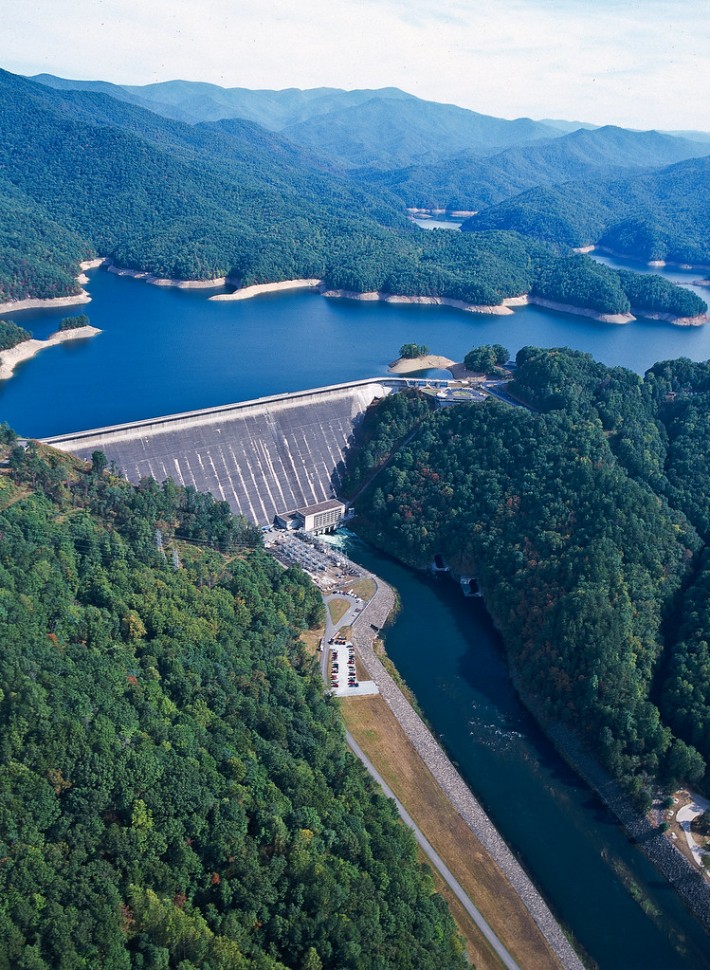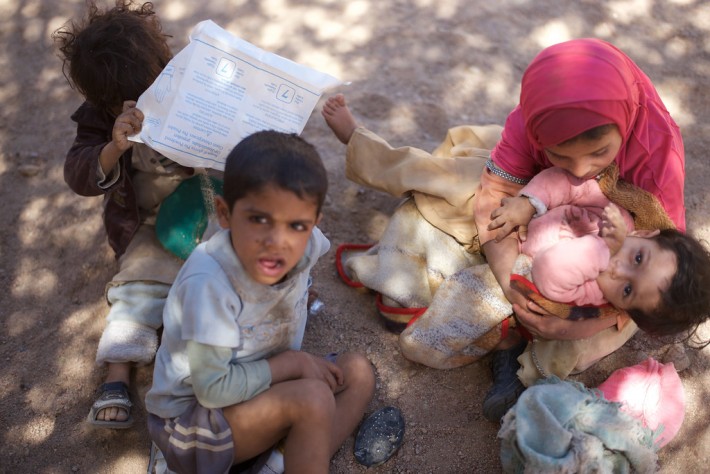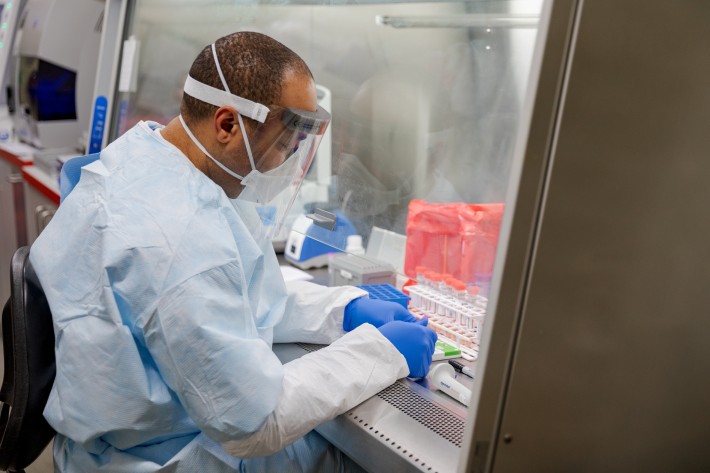CRI (China Radio International) today, interviewed Helga Zepp-LaRouche, Schiller Institute President, on “The World” program on the Sept. 14 EU-China summit. Asked about her evaluation, she said it was “a step forward” in a very turbulent world, but added her personal view that world leaders should more forcefully address the Covid-19 crisis; China has done an extraordinary job in dealing with it. She expressed her desire that the EU would have responded to China’s idea of a Health Silk Road, and also the need for a new financial architecture. She said that if the Four Principles President Xi Jinping put forward were accepted, then we wouldn’t have to worry about the danger of war. Zepp-LaRouche pointed to the EU’s obsession with the Green Deal getting in the way of real cooperation based on advanced technology and innovation, so the EU should be thinking more about that. The possible trade and investment deal with China is in the EU’s vested interest, so they would do well to come to some agreement. http://chinaplus.cri.cn/podcast/detail/1/240640
On July 29th, the Schiller Institute held an on-line seminar, “Stop the Hunger Pandemic. Save Farmers, Deliver Food!” Moderated by Richard Black and Bob Baker, the two-hour discussion included three US farm leaders from Colorado, Alaska and California, and 11 diplomats — including 6 ambassadors — from Sub-Saharan and West Africa, Central America, and Central Asia. A former Senator and current candidate from Trinidad and Tobago also participated. Most of the participants had been involved in the series of Schiller Institute international conferences held from April through June, 2020.
Richard Black described the civilization-threatening crisis which all of humanity currently faces — pandemic, starvation, and war between nuclear powers — and the 50-year record of Lyndon LaRouche and his associates of providing solutions, involving the massive economic development of the former colonial sector. A major focus was put on creating a chorus of nations worldwide to ensure the realization and required content of a P5 heads-of-state Summit. Paul Gallagher outlined the nature of the imminent financial collapse and how a New Bretton Woods System would work. He showed that FDR’s TVA method has been the only action to have ever succeeded — from the 1930’s until today — in creating a sustained recovery from collapse. Marcia Baker dramatically showed the extent of the accelerating starvation rates worldwide, the on-going destruction of the farmer in the advanced sector, and the recent farmer upsurge in Europe and the US, demanding a new system.
Paul Gallagher noted that the intense discussion from the diplomats on the failures of the old Bretton Woods System and questions on how the “new” one could be different, is exactly the kind of productive debate we want. The farm leader from Colorado was excited to answer many questions from the diplomats. One West African ambassador remarked, afterwards, that he was very happy to see so many other ambassadors involved in the discussion, saying that the ideas presented “really made me think.” Several ambassadors expressed moral outrage that, after 45 years, Transaqua has still not been built, and that food self-sufficiency through growing high-quality indigenous crops has been replaced with cash crops for export to the nations of the North, enslaving nations to “the market.”
The seminar was not recorded, with no media present, to allow for the most free discussion. Some ambassadors are already mobilizing with us to create a chorus of sovereign voices to ensure the realization and the content of a, very near-term, P5 Summit. Our plan for the upcoming September 5th Schiller Institute conference was discussed.
China has often been subject to catastrophic flooding. Previously such floods, as they have experienced this year, would have led to tens of thousands of deaths, massive loss of farmland and the threat of famine. When China decided at the end of the last century to build the Three Gorges Dam, the largest dam of its kind in the world, there was some controversy. Too big, too expensive, and it wouldn’t help in a major flood, were the common arguments. But today the Three Gorges Dam received its largest contingent of water since it was constructed in 2003, and is continuing to perform. At 8 a.m.the inbound flow reached 75,000 cubic/meters per second.
President Xi is visiting the region in Anhui province further down along the Yangtze. While there has been much flooding and destruction, the loss of life has been minimal and scientific farming, including satellite technology, soil sensors and insect-monitoring lamps, the data of which are transmitted simultaneously by the Internet of Things to smartphones and computers, have allowed them to mitigate losses. While grain production has from time immemorial and today been the number one issue for Chinese rulers, the devastated flooding will, thanks to technology, not prevent some bumper crops this year along the Yangtze and its tributary rivers.
Unit 1 of the UAE’s Barakah plant — the Arab world’s first nuclear energy plant — has connected to the national power grid, in a historic moment enabling it to provide cleaner electricity to millions of residents and help reduce the oil-rich country’s reliance on fossil fuels. “This is a major milestone, we’ve been planning for this for the last 12 years now,” Mohamed Al Hammadi, CEO of Emirates Nuclear Energy Corporation (ENEC), told CNBC’s Dan Murphy in an exclusive interview ahead of the news.
Unit 1 is the first of what will eventually be four reactors, which when fully operational are expected to provide 25% of the UAE’s electricity and reduce its carbon emissions by 21 million tons a year, according to ENEC. That’s roughly equivalent to the carbon emissions of 3.2 million cars annually.
The Gulf country of nearly 10 million is the newest member of a group of now 31 countries running nuclear power operations. It’s also the first new country to launch a nuclear power plant in three decades, the last being China in 1990.
“The UAE has been growing from an electricity demand standpoint,” Al Hammadi said. “That’s why we are trying to meet the demand (and) at the same time have it with less carbon emissions.”
The UAE’s electricity mix will continue to include gas and renewable energy, with “the baseload from nuclear,” the CEO added, which he described as a “safe, clean and reliable source of electricity” for the country.
The project is also providing “highly compensated jobs” for the Emiratis and will introduce new industries for the country’s economy, Al Hammadi said. The company noted that it has awarded roughly 2,000 contracts worth more than $4.8 billion for local companies.
Vasily Nebenzia, Russia’s ambassador to the United Nation’s, told the U.N. Security Council that “We are ready for international cooperation with all interested partners in the development and production of vaccines and treatments to ensure a coordinated global response to the spread of Covid-19 and a common victory over the pandemic.” Nenbenzia’s remarks came after Russia’s announcement of their “Sputnik V” vaccine. RT reported that Nebenzia said that clinical trials have already shown it to be both safe and highly effective, and noted that other “promising” vaccines were being developed in Russia as well.
RT commented: “Some Western governments have disparaged the Russian achievement, demanding to see evidence of the vaccine’s safety, even as their own pharmaceutical companies have required absolute immunity from liability lawsuits over potential adverse effects.”
As for the alleged intelligence, Esper said “To the best of my recollection, I have not received a briefing that included the word `bounty.’” Esper was then asked where the intelligence on Russian bounties came from, to which he replied: “It was not produced by a DoD intelligence agency.” Later in the hearing, Esper said [https://thehill.com/policy/
Milley, for his part, vowed to “get to the bottom” of the alleged intelligence reporting and pledged his “1000 percent commitment” to sufficiently protecting U.S. forces. Milley later called the bounties a “unique, discrete piece of information that is not corroborated,” but said Pentagon officials “are taking it serious, we’re going to get to the bottom of it, we”re going to find out if in fact it’s true, and if it is true, we will take action.”
Operation Warp Speed, rolled out by the Trump administration to fast-track the development and manufacture of promising vaccine candidates, has added another potential vaccine to its arsenal-in-development. Novavax, a Maryland-headquartered biotech firm, announced on July 7 that it has secured $1.6 billion from the federal government for work on its vaccine, known as NVX-CoV2373, including the delivery of 100 million doses beginning later this year.
Novavax joins Johnson & Johnson (March, $456 million), Moderna (April, $483 million), and AstraZeneca (May, up to $1.2 billion) in receiving support for research, manufacturing, and distribution.
Also on July 7, Regenon announced that it had secured a $450 million contract under Operation Warp Speed for the manufacture and supply of REGN-COV2, a cocktail of two monoclonal antibodies that could be used to help those who are infected as well as offering prophylaxis for health care workers and others at high risk. It is currently in Phase 2/3 trials for treatment of COVID-19 and Phase 3 trial for preventing infection in the first place. If it is successful, the U.S. government will provide the doses at no cost (domestically) and will handle their distribution.
Finally, supplies required for administering a vaccine are also receiving support, around $500 million total, so far: ApiJect entered into a contract to supply 100 million prefillable syringes, Corning is expanding its manufacturing to produce glassware, and SiO2 Materials Science is receiving government support to producing vials.
Yesterday, the World Health Organization (WHO), the World Food Program (WFP), the Food and Agriculture Organization (FAO) and UNICEF issued a call for action to prevent childhood malnutrition and death, now worsening in many places, reported in the {Lancet} at length on July 27. What is clear from the call and the dire situation described in a related Associated Press article on the malnutrition, starvation and death among children in sub-Saharan Africa, Afghanistan, Yemen and elsewhere, is that these needs can only be met by implementation of the LaRouchePAC program to create 1.5 billion productive jobs, and building of global medical infrastructure.
“As leaders of four UN agencies,” the call read, “we are issuing a call for action to protect children’s right to nutrition in the face of the COVID-19 pandemic. This requires a swift response and investments from governments, donors, the private sector, and the UN. Five actions must be taken and tracked immediately…..[provision of food and help listed]….”
The four agencies estimated that at least $2-4 billion is needed immediately “to protect these children, prevent and treat malnutrition, and avoid human loss. This $2-4 billion estimate includes an essential package of four life-saving interventions: prevention of wasting in children at risk; treatment for children who are wasted; biannual vitamin A supplementation for children aged 6–59 months (90% coverage); and mass communication for the protection, promotion, and support of breastfeeding that focuses on caregivers or families of children aged 0–23 months.
“The estimated increase in child wasting is only the tip of the iceberg. The COVID-19 pandemic is also expected to increase other forms of child malnutrition, including stunting, micronutrient deficiencies, and overweight. The global community’s failure to act now will have devastating long-term consequences for children, human capital, and national economies.”
In a conversation yesterday with Dr. Francis Collins, the Director of the National Institutes of Health, Dr. Tony Fauci, Director of the National Institute of Allergy and Infectious Diseases (NIAID), made a special appeal to young people to understand that if they become infected, although asymptomatic, they can infect others who may be more vulnerable . Taking necessary precautions can make the difference. Emphasizing that “we are still knee-deep in the first wave” of the coronavirus pandemic, which he described as “a surge, or a resurgence of infections superimposed on a baseline … that really never go down to where we wanted to go,” he reported that the average age of new patients has now dropped by about 15 years just over the past few months. While young people may not become seriously ill, he warned, COVID can still “put them out of action for weeks at a time.”
The fatality rate is significantly lower among Gen Y and millennials, Fauci pointed out, and many of those cases are asymptomatic. But, he cautioned, “just because you’re 21 and you may not have significant symptoms, that does not mean you can’t affect other people, and I think that’s something that we’re concerned about.” Fauci urged young people to remember that when they’re infected, there’s a likelihood that they could spread the disease to people who are at high risk of serious illness, and then, *“you’re part of the propagation of the pandemic,* so it’s your responsibility to yourself, as well as to society, to avoid infection.” (emphasis added)
An article published July 1 in JAMA Neurology indicates that young people and children can experience severe complications from novel coronavirus, manifesting secondary neurological problems, causing brain damage, which occur following a coronavirus infection. Called “COVID-19 pediatric multi-system inflammatory syndrome,” it is thought to be a debilitating immune response to COVID-19, similar, but worse than, the Kawasaki-like inflammatory condition that has previously been linked to young adults with coronavirus. JAMA Neurology points to increasing reports “of children developing systemic inflammatory response requiring intensive care,” South China Morning Post reported July 6. This suggests that “despite the typically mild acute infection, children may be at high risk of a secondary inflammatory syndrome.”
New Jersey physician Dr. Jen Caudle told CNN she has seen young patients suffer from strokes, shortness of breath, fatigue, or the inability to smell and taste long after recovering from acute effects of coronavirus.
As the number of confirmed infections in the U.S. has surpassed 4 million, some labs testing for COVID-19 are handling a heavy load of cases, which they are taking longer to process, resulting in long processing delays from four to 14 days to deliver test results.
Jay Solomon, CEO of Aviva in Sarasota, a senior community with a nursing home and assisted living facility, said to AP on July 22 that results were taking up to 10 days to come back. ”It’s almost like, what are we accomplishing in that time? If that person is not quarantined in that 7-10 days, are they spreading without realizing it?”
The AP story, “US Labs Buckle Amid Testing Surge,” reported that health experts say that test results that come back after two or three days are deficient because by then, “the window for tracing the person’s contacts to prevent additional infections has essentially closed.”
Dr. Deborah Birx of the White house coronavirus task force said on Fox TV that “the turnaround times, particularly across the South, are too long.”
Dr. Leana Wen, a public health professor at George Washington University said it’s reasonable to tell people awaiting test results to isolate for 24 hours. “Imagine, you tell a parent with young children to self-isolate for 10 days or more without knowing they actually have COVID? I mean, that’s ridiculous.”
Quest Diagnostics, one of the nation’s largest testing chains, said it can’t keep up with demand and most patients will face waits of a week or longer for results. Quest’s pooled testing process will be rolling out in Virginia and Massachusetts next week. This technology (discussed in the Monday briefing) can allow more samples to be tested.
Testing capacity must be expanded. Defense Production Act, anyone?


















